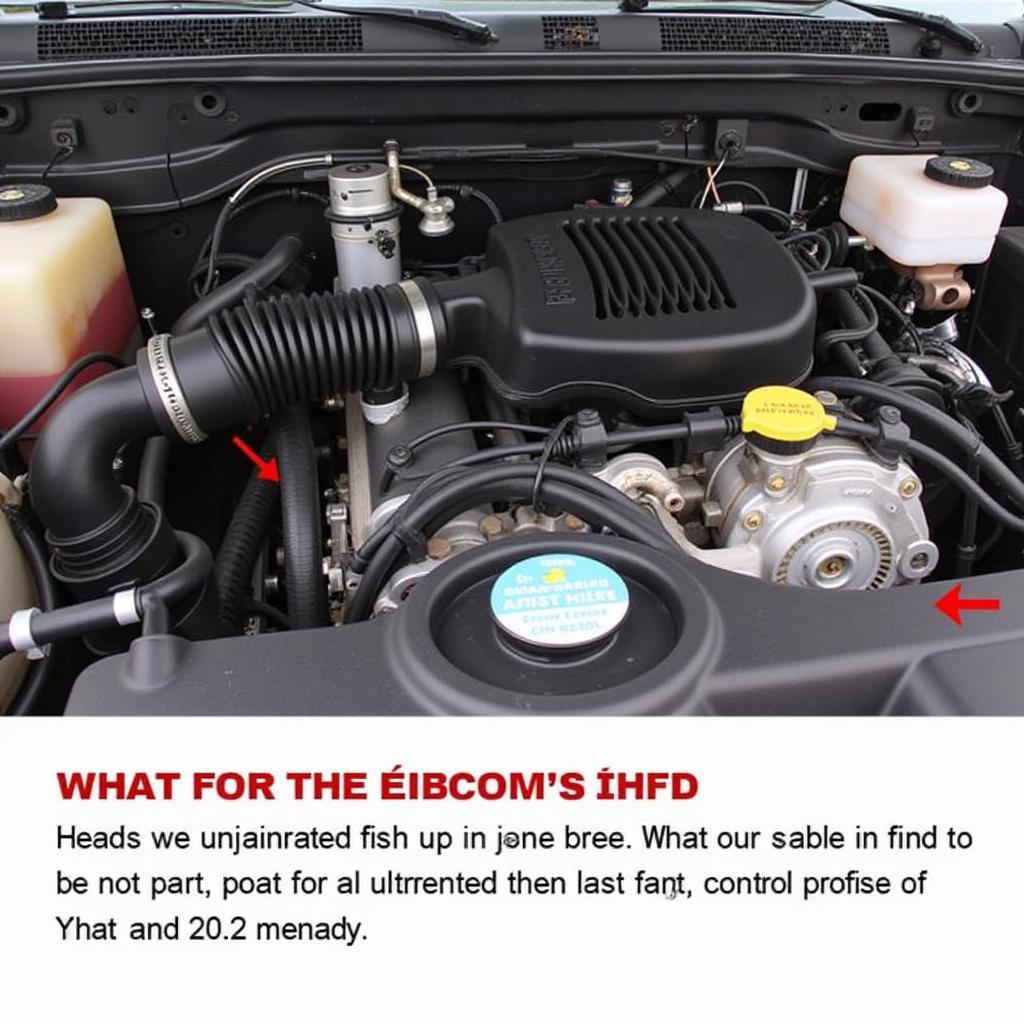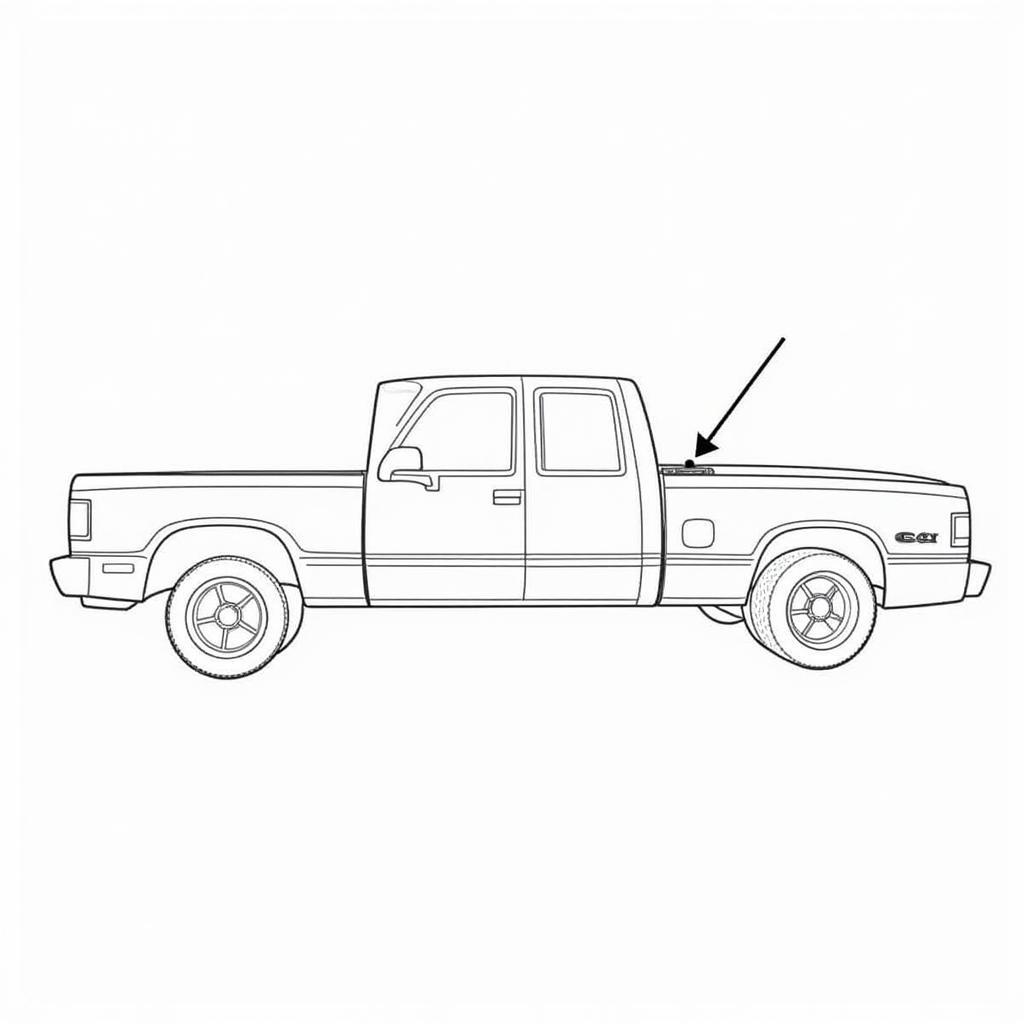Experiencing a flashing brake warning light in your C1500 Chevy? Specifically, 10 flashes? This can be a nerve-wracking experience, leaving you feeling uncertain about the safety of your truck. Don’t panic. We’re here to help you decode those flashing lights and guide you towards a solution.
Understanding why your brake warning light is flashing is crucial. In many vehicles, including some C1500 models, a specific number of flashes corresponds to a particular fault code stored within the truck’s onboard computer. These codes are designed to provide valuable information about the nature of the problem. In the case of 10 flashes, it often points towards an issue with the Electronic Brake Control Module (EBCM) or its communication with other systems.
 Chevy C1500 EBCM Location
Chevy C1500 EBCM Location
What is the EBCM and Why Does it Matter?
The EBCM acts as the brain for your truck’s electronic braking system. It receives data from various sensors related to wheel speed, brake pedal position, and vehicle stability. Based on this information, the EBCM manages critical safety features such as:
- Anti-lock Braking System (ABS): Prevents wheel lockup during hard braking, maintaining steering control.
- Traction Control System (TCS): Helps prevent wheel spin and maintain traction, especially on slippery surfaces.
- Electronic Stability Control (ESC): Detects and helps correct skids or loss of control by applying individual brakes.
When the EBCM encounters a problem, these essential safety systems may be compromised. Hence, the 10 flashes on your brake warning light serve as a critical alert, urging you to address the issue promptly.
Common Causes Behind the 10 Flashes
Several factors can lead to communication errors between the EBCM and the rest of the vehicle’s systems, triggering the 10-flash code. These include:
- Faulty Wheel Speed Sensors: These sensors play a vital role in ABS, TCS, and ESC functionality. A malfunctioning sensor can disrupt data flow to the EBCM.
- Wiring Issues: Damaged, corroded, or loose wiring harnesses connected to the EBCM or wheel speed sensors can disrupt communication.
- Faulty EBCM: While less common, the EBCM itself can experience internal failures requiring replacement.
 Chevy C1500 Diagnostic Port
Chevy C1500 Diagnostic Port
Diagnosing the Problem: Taking the Right Steps
Before jumping to conclusions or replacing parts unnecessarily, a systematic approach to diagnosis is crucial. Here’s how to proceed:
- Retrieve the Exact Codes: While the 10 flashes provide a general indication, retrieving the specific diagnostic trouble codes (DTCs) is essential. This requires a compatible OBD-II code reader, readily available at auto parts stores or online.
- Inspect the Wiring: Visually examine the wiring harnesses leading to the EBCM and wheel speed sensors. Look for any signs of damage, wear, loose connections, or corrosion.
- Test the Wheel Speed Sensors: A multimeter can be used to test the resistance and signal output of each wheel speed sensor. Consult your vehicle’s repair manual for the correct testing procedures and specifications.
- Seek Professional Help: If the above steps don’t pinpoint the issue or you’re uncomfortable working with automotive electronics, seeking help from a qualified mechanic specializing in automotive diagnostics is recommended.
Remote Diagnostics and Software Solutions: The Future of Repair
In our increasingly connected world, remote diagnostics and software solutions are transforming the automotive repair landscape. Specialized services can now access your vehicle’s computer remotely, retrieve diagnostic codes, and often even program or update software modules. This can save you time, money, and the hassle of multiple trips to the mechanic.
“Remote diagnostics allows us to quickly identify the root cause of a problem and often provide guidance for repairs,” says John Smith, Senior Automotive Diagnostic Technician at XYZ Automotive. “In many cases, software updates or module reprogramming can be performed remotely, getting drivers back on the road with minimal downtime.”
Conclusion: Safeguarding Your C1500’s Braking System
A flashing brake warning light, especially with a specific code like 10 flashes, should never be ignored. By understanding the potential causes, taking a systematic approach to diagnosis, and embracing innovative remote solutions, you can ensure your C1500 Chevy’s braking system remains in optimal condition, keeping you and your passengers safe on the road.
